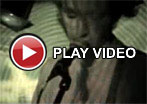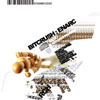 Bitcrush, the latest solo endeavor from Mike Cadoo, takes both themelodic and gritty elements from his prior work in Gridlock and thenow-defunct Dryft and splices them with an urban sensibility. Morecoherant and accessible than anything Cadoo has done previously, Enarcis a logical musical progression that retains a filmic nature whileembracing the notion of traditional song structure. Fans of his workmight find themselves caught off guard by this at first, but theresults are, to quote the soon-to-be-ousted President Bush, superb. Theopening cut "Engale" starts off as expected, with a growing hyponoticdrone peppered with punchy, crunchy percussion. Yet despite the presentfamiliarity, it quickly becomes clear that Bitcrush is not just anotherabstract experimental soundscape act, as the pleasant introduction oftraditional instrumentation on "Untilted" reveals. Moaning with digitalnoise, "Arjon Tenpher" dazzles with dubbed out drum loops and creepingsynthesized melodies. "Habitual" shifts gears from its relativelystraightforward hip hop groove by climaxing with disjointed junglismand an acid teaser lead line. The stunning and irrepressiblyhead-nodding "Eye Koto" blows the roof off the motherfucker with aBristol inspired jam of plucked twangy guitar, huge beats, and DSPmanipulation. "Frebasyc" rocks a Peter Hook-style riff over sharpstuttering drums, with the only missing desired addition being vocals,which apparently will be incorporated into future Bitcrush tracks."Carbon" locks itself in the echo chamber for something somewhatresembling the recent 303-obsessed Wagon Christ album without thekitsch. Conversely, the untitled hidden bonus track does a 180 degreeturn as a straight-up shoegazing indie rock song that could easily windup on college radio station playlists. Standing defiant before theblown out hull of IDM, Enarc is an aurally arresting affairthat stays captivating throughout and raises the bar for Warp noodlers,Ninja Tune wannabes, Planet µ wankers, and the rest of their ilk.
Bitcrush, the latest solo endeavor from Mike Cadoo, takes both themelodic and gritty elements from his prior work in Gridlock and thenow-defunct Dryft and splices them with an urban sensibility. Morecoherant and accessible than anything Cadoo has done previously, Enarcis a logical musical progression that retains a filmic nature whileembracing the notion of traditional song structure. Fans of his workmight find themselves caught off guard by this at first, but theresults are, to quote the soon-to-be-ousted President Bush, superb. Theopening cut "Engale" starts off as expected, with a growing hyponoticdrone peppered with punchy, crunchy percussion. Yet despite the presentfamiliarity, it quickly becomes clear that Bitcrush is not just anotherabstract experimental soundscape act, as the pleasant introduction oftraditional instrumentation on "Untilted" reveals. Moaning with digitalnoise, "Arjon Tenpher" dazzles with dubbed out drum loops and creepingsynthesized melodies. "Habitual" shifts gears from its relativelystraightforward hip hop groove by climaxing with disjointed junglismand an acid teaser lead line. The stunning and irrepressiblyhead-nodding "Eye Koto" blows the roof off the motherfucker with aBristol inspired jam of plucked twangy guitar, huge beats, and DSPmanipulation. "Frebasyc" rocks a Peter Hook-style riff over sharpstuttering drums, with the only missing desired addition being vocals,which apparently will be incorporated into future Bitcrush tracks."Carbon" locks itself in the echo chamber for something somewhatresembling the recent 303-obsessed Wagon Christ album without thekitsch. Conversely, the untitled hidden bonus track does a 180 degreeturn as a straight-up shoegazing indie rock song that could easily windup on college radio station playlists. Standing defiant before theblown out hull of IDM, Enarc is an aurally arresting affairthat stays captivating throughout and raises the bar for Warp noodlers,Ninja Tune wannabes, Planet µ wankers, and the rest of their ilk.
Two new shows just for you. We have squeezed out two extended release episodes for this weekend to get you through this week. They contain mostly new songs but there's also new issues from the vaults. The first show features music from Rider/Horse, Mint Field, Robert Aiki Aubrey Lowe, Anastasia Coope, ISAN, Stone Music, La Securite, Bark Psychosis, Jon Rose, Master Wilburn Burchette, Umberto, Wand, Tim Koh, Sun An, and Memory Drawings. The second episode has music by Laibach, Melt-Banana, Chuck Johnson, X, K. Yoshimatsu, Dorothy Carter, Pavel Milyakov, Violence Gratuite, Mark Templeton, Dummy, Endon, body / negative, Midwife, Alberto Boccardi, Divine. Cow in Maui from Veronika in Vienna. Get involved: subscribe, review, rate, share with your friends, send images! |



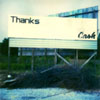 Here at last is a collection of recordings from the 2001 stateside tourof this foursome, all like-minds and prolifics within the vibrantimprov communities of Berlin and Boston. Bhob Rainey and Axel Doernerin particular have emerged as leaders in the extended technique ofbreathy brass playing, where each surface of their horns becomesavailable as an amplified textural playground, as easily hollowed outfor rustling, gaseous overflows as transformed into a turbine ofmagnified industrial clang. Their approach to improvisation means amore acute interaction with the instrument, an inward expansion on thepart of each player that few have been able to jive successfullyagainst the responsibilities of the ensemble setting. Too often theimmaterial (or ultra-material)nature of the style creates barriers between musicians, who are temptedinto layers of colorless ambience or dispassionate exchanges in noise.Even Doerner and Rainey, who maintain astonishing levels of quality inboth solo and group play, sometimes walk into the occasional critiqueof their work as too thin or minimal in its concerns, its dynamics toohidden. These criticisms have no bearing on Thanks, Cash, adisc as sonically dense as anything I've heard from these players, fullof patient, attuned interactions and rich, dark detail. Rainey'sNmperign bandmate Greg Kelley borrows from the bristly, stuntedhalf-blurts of that group's tenser moments, laying down colored accentsand squealing feedback takeovers atop Doerner's closely percussivebreathing exercises and minimal electronic accompaniment. The puretones and static waves of his computer mesh with the ghostlike hover ofAndrea Neumann's innenklavier, producing a painted backdrop ofthrobbing and electric earth tones, a synthetic and darkly greenatmosphere where Rainey's horn hobbles like a wind-tricked door. Hemoves with thrilling impulse from grand, industrial hollows to theclaustrophobic frenzy of spit-soaked insects in the bell of his sax,each sensation delivered with an anticipated and appropriate magnitude.Greater than any one contribution, however, is the ambience of thewhole. The players are less interested in reaction or embellishment aswith a thick textural weave, often achieved as the three horns blend abreathing feedback pattern over Neumann's detached string tangles. Attimes the sound is overpowering and anxious, certainly busier, andtouching harsher extremes than the Nmperign records, but reaching for anew kind of lushness, a forest of electrical fields and buried energy.The four have created a writhing lifeform, nuanced and surprising allat once, and something I can barely imagine witnessing live.
Here at last is a collection of recordings from the 2001 stateside tourof this foursome, all like-minds and prolifics within the vibrantimprov communities of Berlin and Boston. Bhob Rainey and Axel Doernerin particular have emerged as leaders in the extended technique ofbreathy brass playing, where each surface of their horns becomesavailable as an amplified textural playground, as easily hollowed outfor rustling, gaseous overflows as transformed into a turbine ofmagnified industrial clang. Their approach to improvisation means amore acute interaction with the instrument, an inward expansion on thepart of each player that few have been able to jive successfullyagainst the responsibilities of the ensemble setting. Too often theimmaterial (or ultra-material)nature of the style creates barriers between musicians, who are temptedinto layers of colorless ambience or dispassionate exchanges in noise.Even Doerner and Rainey, who maintain astonishing levels of quality inboth solo and group play, sometimes walk into the occasional critiqueof their work as too thin or minimal in its concerns, its dynamics toohidden. These criticisms have no bearing on Thanks, Cash, adisc as sonically dense as anything I've heard from these players, fullof patient, attuned interactions and rich, dark detail. Rainey'sNmperign bandmate Greg Kelley borrows from the bristly, stuntedhalf-blurts of that group's tenser moments, laying down colored accentsand squealing feedback takeovers atop Doerner's closely percussivebreathing exercises and minimal electronic accompaniment. The puretones and static waves of his computer mesh with the ghostlike hover ofAndrea Neumann's innenklavier, producing a painted backdrop ofthrobbing and electric earth tones, a synthetic and darkly greenatmosphere where Rainey's horn hobbles like a wind-tricked door. Hemoves with thrilling impulse from grand, industrial hollows to theclaustrophobic frenzy of spit-soaked insects in the bell of his sax,each sensation delivered with an anticipated and appropriate magnitude.Greater than any one contribution, however, is the ambience of thewhole. The players are less interested in reaction or embellishment aswith a thick textural weave, often achieved as the three horns blend abreathing feedback pattern over Neumann's detached string tangles. Attimes the sound is overpowering and anxious, certainly busier, andtouching harsher extremes than the Nmperign records, but reaching for anew kind of lushness, a forest of electrical fields and buried energy.The four have created a writhing lifeform, nuanced and surprising allat once, and something I can barely imagine witnessing live.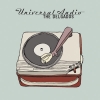 The Delgados are done with confrontation and hate at least musically—amodus operandi their last two albums were laden with—and want to showoff a lighter side, concentrating on harmonies and jangly guitars toget the point across and cause the spirits to rise. Universal Audio,then is the Delgados turned firm pop outfit, having fun and enjoyingevery moment, even in the most somber of tempos and dourest of keys.Recorded with Tony Doogan at their own Chem19 studios, these songs arefull of little treats of fancy as Alun Woodward and Emma Pollock tradeoff singing duties and fill it out with whatever strikes their fancy.Starting off is what may sound like fighting words drowned in brightguitars, but is actually a question of faith and what gets people intotheir situations. A little keys touch the point, and then the heavydrums return with perfect syncopation. At the chorus the song takesflight, and then the next verse takes it towards the sun, withdistorted madness accompanying a secondary vocal, harmonies, and therest of the instruments. Suddenly it's the indie rock wall-of-sound,though with the same intent of warming up the entire world with alittle bit of sunshine through a thick and layered pop sound. Eventhough the lyrics seem full of questions or self doubt, the band soundsas confident as ever in this sugar sweet head bob of a joy parade,until the fourth track, "Come Undone," a piano-led dirge with Pollock'smost plaintive and gorgeous vocal wailing "this is how it feels todrown, this is how we come undone." Brave and unrelenting, the albumcontinues, the songs an adventurous and captivating walk on new ground,the kind of record the Delgados have been threatening to make for along time with only one song crossing the five minute mark. There areno missteps or faltering moments to be found, no paltry fallacies orfacades of indie cred. It's just one solid block of good music with thebest of intentions. Others may talk of how it rates with the rest oftheir catalog, but it just plain doesn't. It transcends it all, andthough I may miss the direct assault of other records, this one doesthe trick just fine.
The Delgados are done with confrontation and hate at least musically—amodus operandi their last two albums were laden with—and want to showoff a lighter side, concentrating on harmonies and jangly guitars toget the point across and cause the spirits to rise. Universal Audio,then is the Delgados turned firm pop outfit, having fun and enjoyingevery moment, even in the most somber of tempos and dourest of keys.Recorded with Tony Doogan at their own Chem19 studios, these songs arefull of little treats of fancy as Alun Woodward and Emma Pollock tradeoff singing duties and fill it out with whatever strikes their fancy.Starting off is what may sound like fighting words drowned in brightguitars, but is actually a question of faith and what gets people intotheir situations. A little keys touch the point, and then the heavydrums return with perfect syncopation. At the chorus the song takesflight, and then the next verse takes it towards the sun, withdistorted madness accompanying a secondary vocal, harmonies, and therest of the instruments. Suddenly it's the indie rock wall-of-sound,though with the same intent of warming up the entire world with alittle bit of sunshine through a thick and layered pop sound. Eventhough the lyrics seem full of questions or self doubt, the band soundsas confident as ever in this sugar sweet head bob of a joy parade,until the fourth track, "Come Undone," a piano-led dirge with Pollock'smost plaintive and gorgeous vocal wailing "this is how it feels todrown, this is how we come undone." Brave and unrelenting, the albumcontinues, the songs an adventurous and captivating walk on new ground,the kind of record the Delgados have been threatening to make for along time with only one song crossing the five minute mark. There areno missteps or faltering moments to be found, no paltry fallacies orfacades of indie cred. It's just one solid block of good music with thebest of intentions. Others may talk of how it rates with the rest oftheir catalog, but it just plain doesn't. It transcends it all, andthough I may miss the direct assault of other records, this one doesthe trick just fine.  One of several definitions of the word "pooka" is "a shape shiftingmagical being from Celtic folklore." It's somewhat a fitting title forJaga Jazzist member Lars Horntveth's debut solo recording, seeing asdefining his style of music would be difficult. Pooka'sstrong compositions draw from the cinematic to jazz to modernclassical, all with the underpinning of electronic-based elements and,at times, a slight edge. Employing a prominent and lush string section,Horntveth's intricate and challenging charts provide quite the workout,rather than just having them playing "eggs" to color in the spacesaround his performances on bass clarinet, saxophones, guitars and ahost of other instruments. For his twenty-four years in age, it'smind-blowing to hear such strong musicianship on a plethora ofinstruments paired with the maturity of his compositions, delicatearrangements and orchestration; or at any age, for that matter. Afterrepeated and very enjoyable listenings (my four-year-old asking it beplayed in the car), it only became apparent when taking more of acritical approach in preparing to review this disc that Horntveth may,at times, have a formula for changing keys when he's got a trulyamazing motif playing out. Yup, that's truly the only offending elementI could find. The more upbeat and driving tracks, such as "The Joker"and "1. Lesson In Violin" rely more on the poppy, electronic side ofthings and less on the backing orchestra; the syncopation of the lattertrack having Jaga Jazzist written all over it. Then again, with themajority of their tunes either written or co-written by Horntveth,comparisons and similarities are inevitable. The greatest track thisyear, "Tics" builds from plucked strings and minimal glitch beatsunderneath haunting soprano saxophone to a grandiose chorus of odd timesignature strings playing out an intricately woven, middle-Easterntinged melody. Having witnessed Horntveth's musical abilitiesfirst-hand and enjoyed his solo recording several times over, he is amusical genius-in-waiting and an important modern composer of his orany other generation.
One of several definitions of the word "pooka" is "a shape shiftingmagical being from Celtic folklore." It's somewhat a fitting title forJaga Jazzist member Lars Horntveth's debut solo recording, seeing asdefining his style of music would be difficult. Pooka'sstrong compositions draw from the cinematic to jazz to modernclassical, all with the underpinning of electronic-based elements and,at times, a slight edge. Employing a prominent and lush string section,Horntveth's intricate and challenging charts provide quite the workout,rather than just having them playing "eggs" to color in the spacesaround his performances on bass clarinet, saxophones, guitars and ahost of other instruments. For his twenty-four years in age, it'smind-blowing to hear such strong musicianship on a plethora ofinstruments paired with the maturity of his compositions, delicatearrangements and orchestration; or at any age, for that matter. Afterrepeated and very enjoyable listenings (my four-year-old asking it beplayed in the car), it only became apparent when taking more of acritical approach in preparing to review this disc that Horntveth may,at times, have a formula for changing keys when he's got a trulyamazing motif playing out. Yup, that's truly the only offending elementI could find. The more upbeat and driving tracks, such as "The Joker"and "1. Lesson In Violin" rely more on the poppy, electronic side ofthings and less on the backing orchestra; the syncopation of the lattertrack having Jaga Jazzist written all over it. Then again, with themajority of their tunes either written or co-written by Horntveth,comparisons and similarities are inevitable. The greatest track thisyear, "Tics" builds from plucked strings and minimal glitch beatsunderneath haunting soprano saxophone to a grandiose chorus of odd timesignature strings playing out an intricately woven, middle-Easterntinged melody. Having witnessed Horntveth's musical abilitiesfirst-hand and enjoyed his solo recording several times over, he is amusical genius-in-waiting and an important modern composer of his orany other generation.  While Dizzee Rascal has been grabbing all the attention on these andhis home shores, another act and acquaintance of his has been waitingpatiently in the wings, ready to unleash his sound on the masses. Wileyhas finally arrived on the scene, though it seems almost like he's cometo the party late, when the UK underground scene already feels ancientand waning. With Mike Skinner getting his lauds and Dizzee pulling therest of the fans, it hardly seems like there's room for Wiley unlesshe's got something original to push. Luckily, he does have that, andenough creative subject matter to keep the ears glued to the speakersand the feet on the dancefloor. Wiley and Dizzee were both members ofthe Roll Deep Crew — both even throw shout outs to them on theirrecords — so like influence produces like stylings; though where thelatter is after the minds and hearts, the former is definitely afterthe rumps and booties. Wiley is a producer, not just a rapper, and hisproduction values are excellent, with clean bass, beats, little or nosamples, and double-tracked vocals with echoes and repeats in oddtones. Plus, his delivery is a bit clearer, making him easier tounderstand through the cockney slant, which also makes him a bit morelikeable. It's to be expected that rhymes will be about the same oldschtick that street hoods chat about, but Wiley's got another messageabout making things work, working through the problems, and succeedingon one's own steam. He raps and speaks with a super smooth flow, andeven when he tells the tale about pies that are missing it doesn'tsound ridiculous, just a regular occurrence in his world. That'sperhaps the most glaring trait that makes Wiley excel: he doesn't takehimself too seriously, willing to joke and jar but do it all with thesame skill and respect as his more driven material. There are guestrappers that add some variety and camaraderie, and some interludes thatare pleasant enough but would have been so much better if he'dcompleted them as finished tracks or integrated them more. If there's amedal to give for this game these days, though, I'd give it to this catover the others. He's obviously put the work in, the years in, takensome hits here and there, but his sound is all his and ultra-original,ready to take on the world or help it along if needs be.
While Dizzee Rascal has been grabbing all the attention on these andhis home shores, another act and acquaintance of his has been waitingpatiently in the wings, ready to unleash his sound on the masses. Wileyhas finally arrived on the scene, though it seems almost like he's cometo the party late, when the UK underground scene already feels ancientand waning. With Mike Skinner getting his lauds and Dizzee pulling therest of the fans, it hardly seems like there's room for Wiley unlesshe's got something original to push. Luckily, he does have that, andenough creative subject matter to keep the ears glued to the speakersand the feet on the dancefloor. Wiley and Dizzee were both members ofthe Roll Deep Crew — both even throw shout outs to them on theirrecords — so like influence produces like stylings; though where thelatter is after the minds and hearts, the former is definitely afterthe rumps and booties. Wiley is a producer, not just a rapper, and hisproduction values are excellent, with clean bass, beats, little or nosamples, and double-tracked vocals with echoes and repeats in oddtones. Plus, his delivery is a bit clearer, making him easier tounderstand through the cockney slant, which also makes him a bit morelikeable. It's to be expected that rhymes will be about the same oldschtick that street hoods chat about, but Wiley's got another messageabout making things work, working through the problems, and succeedingon one's own steam. He raps and speaks with a super smooth flow, andeven when he tells the tale about pies that are missing it doesn'tsound ridiculous, just a regular occurrence in his world. That'sperhaps the most glaring trait that makes Wiley excel: he doesn't takehimself too seriously, willing to joke and jar but do it all with thesame skill and respect as his more driven material. There are guestrappers that add some variety and camaraderie, and some interludes thatare pleasant enough but would have been so much better if he'dcompleted them as finished tracks or integrated them more. If there's amedal to give for this game these days, though, I'd give it to this catover the others. He's obviously put the work in, the years in, takensome hits here and there, but his sound is all his and ultra-original,ready to take on the world or help it along if needs be.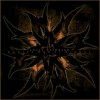 While the land of their Scandinavian contemporaries slowly creepstowards weeks of complete and unrelenting natural darkness, Britain'sAnaal Nathrakh seem set to unleash a similar fate upon the world withthe release of their second full length. Picking up right where theyleft off 3 years ago with their wildly successful and criticallyacclaimed debut, The Codex Necro, the duo bring more of what they havetermed to be "the soundtrack for armageddon, the [audile] essence ofevil, hatred and violence, the true spirit of necro taken to itsmusical extremes." While obviously this is typical black metalhyperbole, they've historically done a pretty solid job of backing itup with their cold, mechanistic precision and merciless velocity.However, Domine Non Es Dignus, as shocking as it may be, sees themprogressing beyond classic "grim" schlock and entering a territorywhere they can truly do some damage. An immediately noticeabledeparture from their previous work is the inclusion of cleanly sung,mildly operatic vocals that bring immediate and unavoidable comparisonsto Garm's late Ulver/early Borknagar work. While this aspect of theirsound is still in its formative stages and is used sparingly, it showspromise. Nowhere is this more evident than the album's standout track,"Do Not Speak," on which vocalist V.I.T.R.I.O.L. ascends, albeit foronly a short time, above the catchy breakneck guitar harmonies for asurprising and, hopefully, revealing glimpse at what is to come.Compare that to "Procreation of the Wretched" in all of its howling,noisy, and all-around old-school glory, and you'll get a pretty goodidea of the astounding range these guys are capable of covering in thecourse of ten short songs. They even take a stab at death metaldynamics with the relatively slow groove of "This is the End," anotherforward thinking gem on an album not lacking novel ideas and more thanadequate execution.
While the land of their Scandinavian contemporaries slowly creepstowards weeks of complete and unrelenting natural darkness, Britain'sAnaal Nathrakh seem set to unleash a similar fate upon the world withthe release of their second full length. Picking up right where theyleft off 3 years ago with their wildly successful and criticallyacclaimed debut, The Codex Necro, the duo bring more of what they havetermed to be "the soundtrack for armageddon, the [audile] essence ofevil, hatred and violence, the true spirit of necro taken to itsmusical extremes." While obviously this is typical black metalhyperbole, they've historically done a pretty solid job of backing itup with their cold, mechanistic precision and merciless velocity.However, Domine Non Es Dignus, as shocking as it may be, sees themprogressing beyond classic "grim" schlock and entering a territorywhere they can truly do some damage. An immediately noticeabledeparture from their previous work is the inclusion of cleanly sung,mildly operatic vocals that bring immediate and unavoidable comparisonsto Garm's late Ulver/early Borknagar work. While this aspect of theirsound is still in its formative stages and is used sparingly, it showspromise. Nowhere is this more evident than the album's standout track,"Do Not Speak," on which vocalist V.I.T.R.I.O.L. ascends, albeit foronly a short time, above the catchy breakneck guitar harmonies for asurprising and, hopefully, revealing glimpse at what is to come.Compare that to "Procreation of the Wretched" in all of its howling,noisy, and all-around old-school glory, and you'll get a pretty goodidea of the astounding range these guys are capable of covering in thecourse of ten short songs. They even take a stab at death metaldynamics with the relatively slow groove of "This is the End," anotherforward thinking gem on an album not lacking novel ideas and more thanadequate execution. 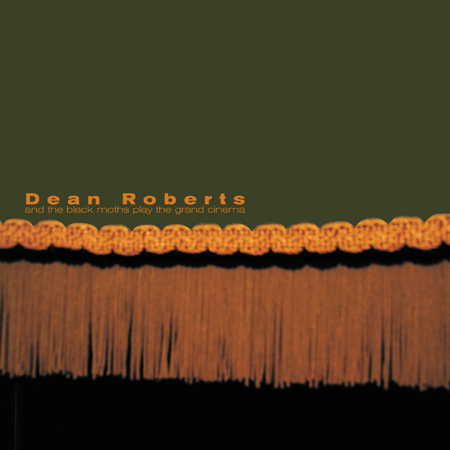 As the dust of Mille Plateaux's collapse settles, it's easy to forgetabout the number of great releases from the label's more experimentaloff-shoot Ritornell that will also be lost. And though I'm not surethat Staubgold is game for a larger reissue series of that label's lostgems, they have certainly chosen one of the best for this singlerepress, complete with redone artwork. Black Moths was Roberts' last "solo" record before 2003's beautiful Be Mine Tonight. It was recorded shortly after a couple rather computer-centric discs (All Cracked Medias and Moth Park)which found Roberts exploring his usual set-up of prepared guitar,hi-hat-heavy percussion, and plunked piano to alienating extremes,instruments deftly chopped and pasted into mock mini-explosions, acoalescence of chiming, shredded sound bits with instrumentalidentities and roles filled only at a bare minimum and movements withina piece arriving in anxious, feigned, and too-often meaninglesssuccession. The "meta-language" Roberts describes himself as creatingon these releases, while unique, can also be frustrating as it providesno easy information about the direction of a particular piece. Often asong's entire progression consists of repetitious, segmented bursts inwhich the interaction and improvisation of the instruments are boxedwithin simple, stunted meditations on a single tonal or textural idea.Roberts' smoky, even ragged playing style, steeped in years of droningimprov with his first group Thela, seems an immediate signifier oflonely and fragile territories, but the religious structuring of theseearlier releases makes for a bizarre conflict of interest as anytangible mood is erased by the calculated and incessant playings off-ofor into a cryptic formal diagram. For Black Moths, Roberts has notgiven up on the high-concept of his early works; rather, he chooses toup the ante by forcing more elements of traditional rock or"song"-styled composition into his already idea-heavy mix. The "BlackMoths," consisting of Matt Valentine, Tim Barnes (of Tower Recordings)and cellist Charles Curtis are not a support band assembled toindulge any new-found sweetness in Roberts' sensibility. They appear asif in the imagined realm of the Spiders from Mars, brought together atRoberts' whim to carry his ideas into rock (or at least free-folk)parody. The "grand cinema" of the title puts the players on stage,weaving rock moves into the reams of static glitch, cello groan, andbillowing guitar squall that unfold out and out, in increasinglyforeign structure over the 40 minutes. Roberts sings over a few of thetrack divisions (marking only pauses along a solid body of shifting andcycling sounds), one time breaking desperately into Eno's "Cindy TellsMe," another bursting with the glammy refrain, "How they adoooore you!"Barnes' percussion and Valentine's bass manage also to sound almostmanic, amazing given the album's formal restraints, which struggle toguide everything toward a sprawling digital submergence where "natural"cracks and pauses are prematurely filled, and new, unsuspected gapsopened. Black Moth's theatrical component does little more thanadd another layer to Roberts' unique sonic amalgam, but it is enough tomake this disc one of his most accessible and most complex, preparingwell for Be Mine Tonight where the artist's bizarrecompositional structures find just the right counterpoint in fragilesong-craft and production detailed enough to make the music sound trulyotherworldly.
As the dust of Mille Plateaux's collapse settles, it's easy to forgetabout the number of great releases from the label's more experimentaloff-shoot Ritornell that will also be lost. And though I'm not surethat Staubgold is game for a larger reissue series of that label's lostgems, they have certainly chosen one of the best for this singlerepress, complete with redone artwork. Black Moths was Roberts' last "solo" record before 2003's beautiful Be Mine Tonight. It was recorded shortly after a couple rather computer-centric discs (All Cracked Medias and Moth Park)which found Roberts exploring his usual set-up of prepared guitar,hi-hat-heavy percussion, and plunked piano to alienating extremes,instruments deftly chopped and pasted into mock mini-explosions, acoalescence of chiming, shredded sound bits with instrumentalidentities and roles filled only at a bare minimum and movements withina piece arriving in anxious, feigned, and too-often meaninglesssuccession. The "meta-language" Roberts describes himself as creatingon these releases, while unique, can also be frustrating as it providesno easy information about the direction of a particular piece. Often asong's entire progression consists of repetitious, segmented bursts inwhich the interaction and improvisation of the instruments are boxedwithin simple, stunted meditations on a single tonal or textural idea.Roberts' smoky, even ragged playing style, steeped in years of droningimprov with his first group Thela, seems an immediate signifier oflonely and fragile territories, but the religious structuring of theseearlier releases makes for a bizarre conflict of interest as anytangible mood is erased by the calculated and incessant playings off-ofor into a cryptic formal diagram. For Black Moths, Roberts has notgiven up on the high-concept of his early works; rather, he chooses toup the ante by forcing more elements of traditional rock or"song"-styled composition into his already idea-heavy mix. The "BlackMoths," consisting of Matt Valentine, Tim Barnes (of Tower Recordings)and cellist Charles Curtis are not a support band assembled toindulge any new-found sweetness in Roberts' sensibility. They appear asif in the imagined realm of the Spiders from Mars, brought together atRoberts' whim to carry his ideas into rock (or at least free-folk)parody. The "grand cinema" of the title puts the players on stage,weaving rock moves into the reams of static glitch, cello groan, andbillowing guitar squall that unfold out and out, in increasinglyforeign structure over the 40 minutes. Roberts sings over a few of thetrack divisions (marking only pauses along a solid body of shifting andcycling sounds), one time breaking desperately into Eno's "Cindy TellsMe," another bursting with the glammy refrain, "How they adoooore you!"Barnes' percussion and Valentine's bass manage also to sound almostmanic, amazing given the album's formal restraints, which struggle toguide everything toward a sprawling digital submergence where "natural"cracks and pauses are prematurely filled, and new, unsuspected gapsopened. Black Moth's theatrical component does little more thanadd another layer to Roberts' unique sonic amalgam, but it is enough tomake this disc one of his most accessible and most complex, preparingwell for Be Mine Tonight where the artist's bizarrecompositional structures find just the right counterpoint in fragilesong-craft and production detailed enough to make the music sound trulyotherworldly. 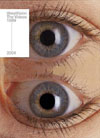 As much as we diss Warp for making bad decisions, they have perfected the right techniques that make them a strong label with a strong identity. Most importantly: present the music in a direct and uncluttered way, with a conscious attention to an appealing design, making sure it is never overpowering: essentially allowing for the music to retain its importance over design. It's essentially what they've done for their first various artist video collection. Warp Vision isn't breaking new grounds nor is it the first of its kind (see: Ninja Tune or Matador), but what it does is collect a wide selection of the music videos that Warp has had something to do with over the years. It has no noticeable Easter Eggs, nor any audio commentary. The menu choices are to play all the videos or select them alphabetically, see the credits and see some images. Noticably absent are videos for Autechre's "Basscadet," Tricky Disco's "Tricky Disco" and "Housefly," anything from Vincent Gallo (THANK GOD), as well as !!! and Tortoise (but then again, they were licensed from US labels so Warp probably doesn't even own the rights to the videos). What is included are everybody's favorite Aphex videos with people running around with his ugly ass face on, Chris Cunningham's brilliant video for Squarepusher's "Come On My Selector" and the Chris Cunningham-wanna be, LFO's "Freak" directed by Daniel Levi (gotta love those fiery young Asian girls), plus videos from Prefuse, Antipop, the inexcusable Jimi Tenor, and many more. I'm pleased to finally be able to see videos for Sweet Exorcist (even if it's a lot of primitive graphics and a Pong! game) and LFO's classic "LFO" and the brilliant "Tied Up." Videos like Broadcast's "Papercuts" are just so visually colorful that it reminds me how much nicer it is to see on a full screen as opposed to a tiny little streaming computer image. A couple Warp TV commercials are included for shits and giggles along with a bonus CD of eleven audio mosaics of various tunes from the Warp vaults mixed by Buddy Pearce and Zilla. The CD is forgettable for the most part, but the DVD has its moments that will please different people depending on their tastes. With any luck 4AD and Mute will take a hint and do something similar. (And if you record execs are actually reading: don't leave anything out next time!)
As much as we diss Warp for making bad decisions, they have perfected the right techniques that make them a strong label with a strong identity. Most importantly: present the music in a direct and uncluttered way, with a conscious attention to an appealing design, making sure it is never overpowering: essentially allowing for the music to retain its importance over design. It's essentially what they've done for their first various artist video collection. Warp Vision isn't breaking new grounds nor is it the first of its kind (see: Ninja Tune or Matador), but what it does is collect a wide selection of the music videos that Warp has had something to do with over the years. It has no noticeable Easter Eggs, nor any audio commentary. The menu choices are to play all the videos or select them alphabetically, see the credits and see some images. Noticably absent are videos for Autechre's "Basscadet," Tricky Disco's "Tricky Disco" and "Housefly," anything from Vincent Gallo (THANK GOD), as well as !!! and Tortoise (but then again, they were licensed from US labels so Warp probably doesn't even own the rights to the videos). What is included are everybody's favorite Aphex videos with people running around with his ugly ass face on, Chris Cunningham's brilliant video for Squarepusher's "Come On My Selector" and the Chris Cunningham-wanna be, LFO's "Freak" directed by Daniel Levi (gotta love those fiery young Asian girls), plus videos from Prefuse, Antipop, the inexcusable Jimi Tenor, and many more. I'm pleased to finally be able to see videos for Sweet Exorcist (even if it's a lot of primitive graphics and a Pong! game) and LFO's classic "LFO" and the brilliant "Tied Up." Videos like Broadcast's "Papercuts" are just so visually colorful that it reminds me how much nicer it is to see on a full screen as opposed to a tiny little streaming computer image. A couple Warp TV commercials are included for shits and giggles along with a bonus CD of eleven audio mosaics of various tunes from the Warp vaults mixed by Buddy Pearce and Zilla. The CD is forgettable for the most part, but the DVD has its moments that will please different people depending on their tastes. With any luck 4AD and Mute will take a hint and do something similar. (And if you record execs are actually reading: don't leave anything out next time!) From the newly formed label, Reduced Phat, comes this anti-compilation,various artists release that announces the label's intent with gusto. Isay "anti-compilation" because unlike most label comps that throw ineverything that's passable that washes up on their shores, the ReducedPhat manifesto calls for paying attention only to the very cream of thecrop of possible artists and releases that are all struggling to beheard. Featuring two tracks and two remixes a piece from Enduser,Edgey, and Subsektor, the disc feels more like a fun exchange between aVIP group of like-minded artists than a collection of random anddisconnected tracks from whomever happens to be out there. Startingwith Enduser's unabashed homage to Lush, 2%quickly kicks into high gear and doesn't relent for five and a halftracks until a break in Edgey's "Indigna" calms things down for laughs.Enduser brings his road-tested production to the mix with his twosplintered originals and remixes for his partners that eviscerate andthen reconstruct their grooves with demented jungle abandon. Subsektoroffers up the most straightforward take on hard drum n bass, but histracks are no less confrontational. Edgey's superb reworking of "DeathVest" into a hard stomping mid-tempo piece is probably my favoritetrack, but Enduser's treatment of Subsektor's "The Breed" is equallyfun and shows once again why Enduser is the master at mashed up drum nbass madness. Clocking in at just over an hour for 12 tracks, 2%provides all the essential breaks and bass without cluttering the mixwith disposable or throw-away tracks. Edgey brings the weirdness,Enduser fractures the beats, and Subsektor provides the hooks and itall works without ever sounding like too much. As much as I liked the Carboncompilation that approached breakbeat music with a similar sensibility,this record feels more coherent and less kitchen sink. Whenever a newlabel jumps into the game of releasing records into a market that isincreasingly unfriendly to physical CDs and untested products andbrands, I get a little nervous. When the releases are as good as thisone though, I can only hope enough people take notice to make theenterprise the success it deserves to be.
From the newly formed label, Reduced Phat, comes this anti-compilation,various artists release that announces the label's intent with gusto. Isay "anti-compilation" because unlike most label comps that throw ineverything that's passable that washes up on their shores, the ReducedPhat manifesto calls for paying attention only to the very cream of thecrop of possible artists and releases that are all struggling to beheard. Featuring two tracks and two remixes a piece from Enduser,Edgey, and Subsektor, the disc feels more like a fun exchange between aVIP group of like-minded artists than a collection of random anddisconnected tracks from whomever happens to be out there. Startingwith Enduser's unabashed homage to Lush, 2%quickly kicks into high gear and doesn't relent for five and a halftracks until a break in Edgey's "Indigna" calms things down for laughs.Enduser brings his road-tested production to the mix with his twosplintered originals and remixes for his partners that eviscerate andthen reconstruct their grooves with demented jungle abandon. Subsektoroffers up the most straightforward take on hard drum n bass, but histracks are no less confrontational. Edgey's superb reworking of "DeathVest" into a hard stomping mid-tempo piece is probably my favoritetrack, but Enduser's treatment of Subsektor's "The Breed" is equallyfun and shows once again why Enduser is the master at mashed up drum nbass madness. Clocking in at just over an hour for 12 tracks, 2%provides all the essential breaks and bass without cluttering the mixwith disposable or throw-away tracks. Edgey brings the weirdness,Enduser fractures the beats, and Subsektor provides the hooks and itall works without ever sounding like too much. As much as I liked the Carboncompilation that approached breakbeat music with a similar sensibility,this record feels more coherent and less kitchen sink. Whenever a newlabel jumps into the game of releasing records into a market that isincreasingly unfriendly to physical CDs and untested products andbrands, I get a little nervous. When the releases are as good as thisone though, I can only hope enough people take notice to make theenterprise the success it deserves to be. The last thing the world needs now is another avant-leaning Japanese psychedelic rock band, especially one with a name as silly and long-winded as Green Milk From the Planet Orange. Their name, besides being a serious impediment to success, sounds like it could be an unpublished manuscript by Dr. Seuss, one of those later works his editor refused to publish because it contained overt drug references. The album is called He's Crying "Look," a cruel juvenile chant which dredged up a whole reservoir of buried childhood trauma that I'd rather not go into right now.
The last thing the world needs now is another avant-leaning Japanese psychedelic rock band, especially one with a name as silly and long-winded as Green Milk From the Planet Orange. Their name, besides being a serious impediment to success, sounds like it could be an unpublished manuscript by Dr. Seuss, one of those later works his editor refused to publish because it contained overt drug references. The album is called He's Crying "Look," a cruel juvenile chant which dredged up a whole reservoir of buried childhood trauma that I'd rather not go into right now.